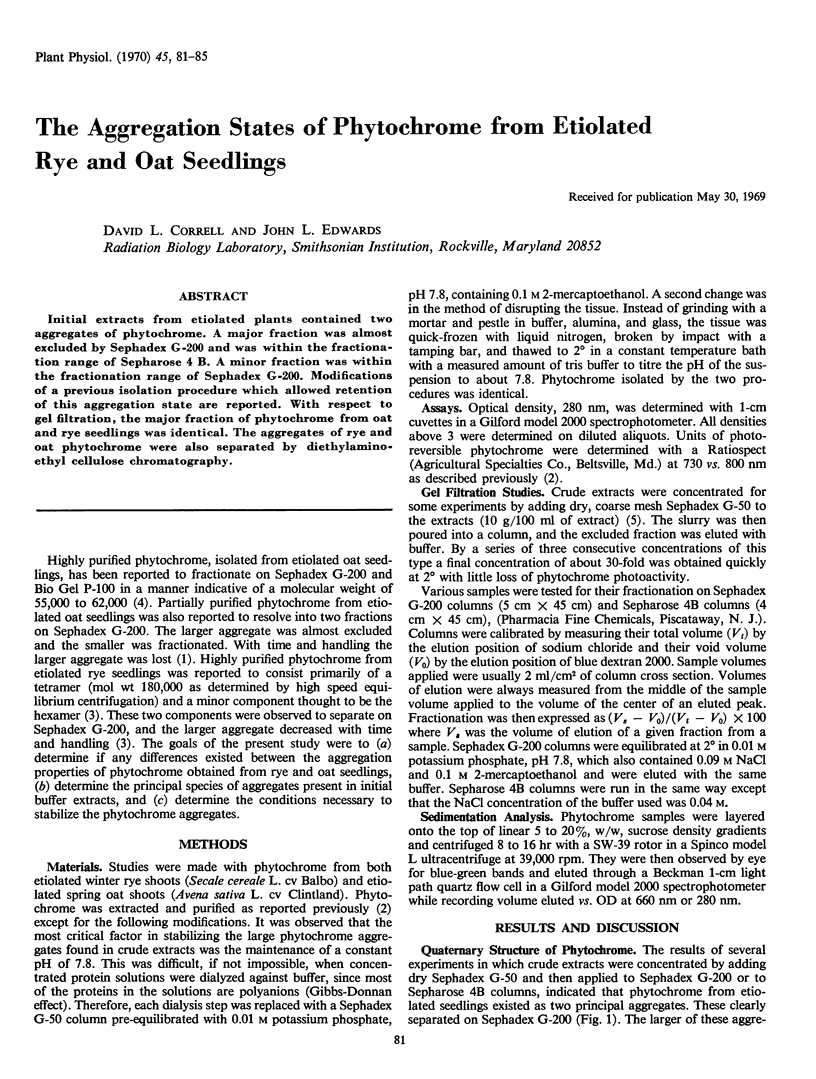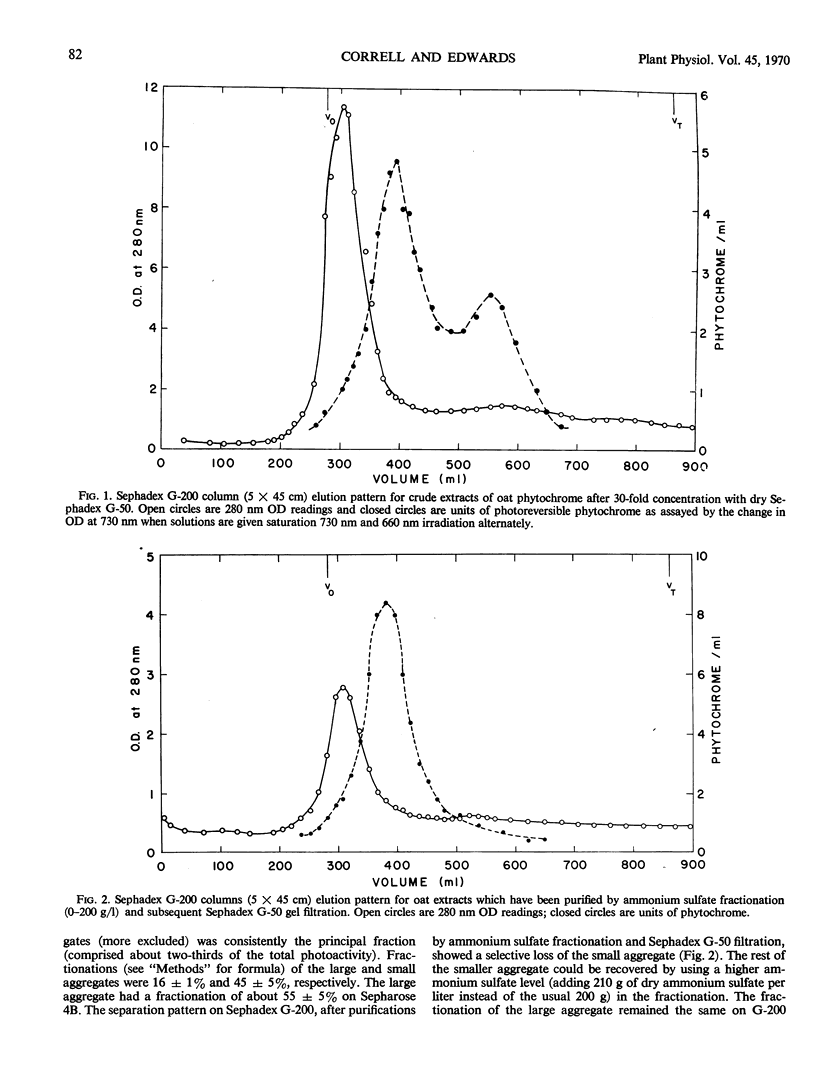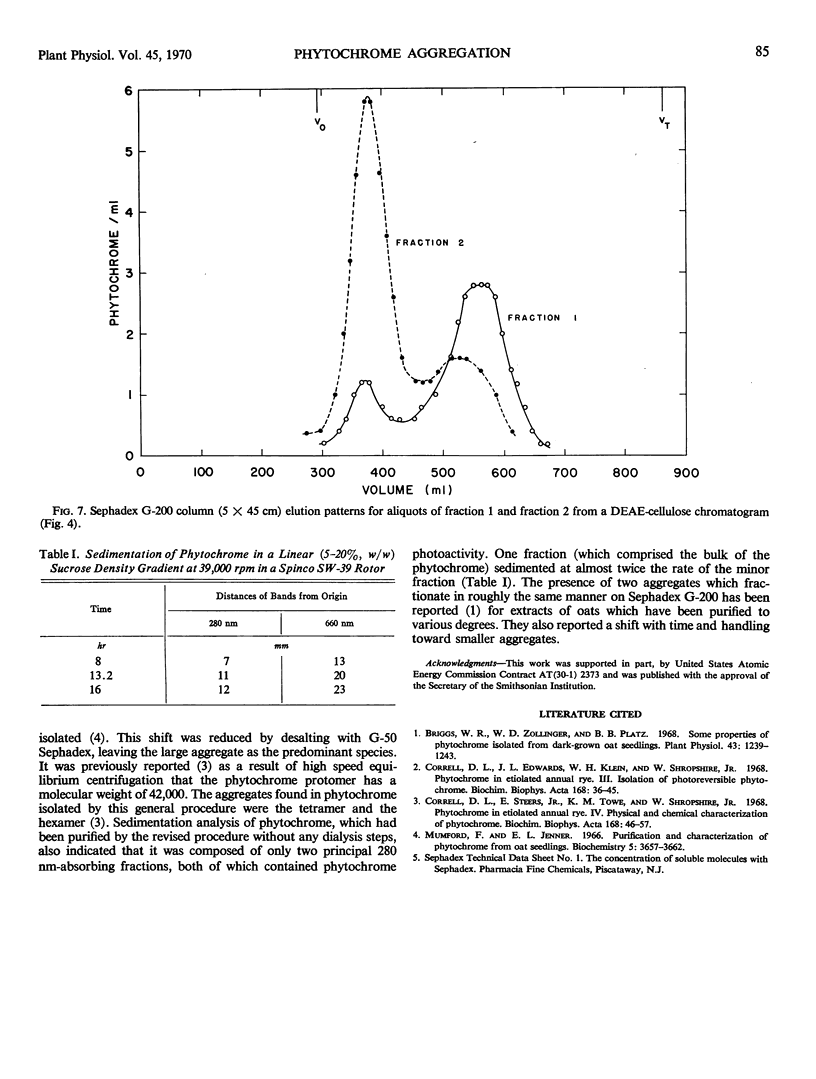Abstract
Initial extracts from etiolated plants contained two aggregates of phytochrome. A major fraction was almost excluded by Sephadex G-200 and was within the fractionation range of Sepharose 4 B. A minor fraction was within the fractionation range of Sephadex G-200. Modifications of a previous isolation procedure which allowed retention of this aggregation state are reported. With respect to gel filtration, the major fraction of phytochrome from oat and rye seedlings was identical. The aggregates of rye and oat phytochrome were also separated by diethylaminoethyl cellulose chromatography.
Full text
PDF




Selected References
These references are in PubMed. This may not be the complete list of references from this article.
- Briggs W. R., Zollinger W. D., Platz B. B. Some Properties of Phytochrome Isolated From Dark-grown Oat Seedlings (Avena sativa L.). Plant Physiol. 1968 Aug;43(8):1239–1243. doi: 10.1104/pp.43.8.1239. [DOI] [PMC free article] [PubMed] [Google Scholar]
- Correll D. L., Edwards J. L., Klein W. H., Shropshire W., Jr Phytochrome in etiolated annual rye. 3. Isolation of photoreversible phytochrome. Biochim Biophys Acta. 1968 Sep 10;168(1):36–45. doi: 10.1016/0005-2795(68)90231-6. [DOI] [PubMed] [Google Scholar]
- Mumford F. E., Jenner E. L. Purification and characterization of phytochrome from oat seedlings. Biochemistry. 1966 Nov;5(11):3657–3662. doi: 10.1021/bi00875a039. [DOI] [PubMed] [Google Scholar]


